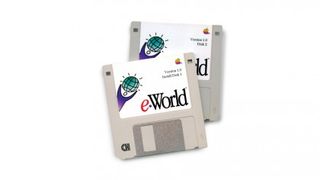When Apple drops the ball: the gear that flopped
Coulda, woulda, shoulda
Oracle tried to establish an 'NC Consortium', including Apple, to produce thin clients: diskless, internet-based computers. Pippin would have failed just for the usual reasons games platforms fail: it was too expensive ($600); it used encoded CDs; it used a TV as display; and it was massively underpowered. It also flopped as an NC, with no network connection, and just a 14.4k modem.
The icing on the cake? That'd be having just the single third-party developer. (Apple learned from this mistake, with developer engagement - perhaps the main reason for iOS's success.)
Back catalogue

Apple has plenty of entries in the 'Where are they now?' software back catalogue. Some are much missed, others however, deserve their place in the pantheon of coding ignominy. When Microsoft brought out Object Linking and Embedding (OLE), Apple felt it needed a 'me too' to compete.
Publish & Subscribe would be better than OLE, with all sorts of whistles and bells. You could publish part of a spreadsheet document - say, the sales chart - and then subscribe to it in a word-processing document. The word-processing document would then see any updates in the original, and offer to update as well.
P&S slumped to defeat on three levels: developers found it difficult to work with, so it was poorly adopted; it would often break because the original was on a floppy disk at home (remember, kids, not everyone had a network); and finally, users couldn't see the point of it. The Mac OS had a great scrapbook, and copy and paste worked well. Apple re-learned the zeroth law of engineering.
Apple has had more than one stab at producing a Macfriendly UNIX operating system. Why? For the same reasons OS X is based on UNIX today: UNIX is stable, has a huge back-catalogue, and gets you into enterprise.
A/UX was their first go. Based on UNIX System V, it was POSIX compliant, had an XWindows server, included TCP/IP networking, and would run on something as lowly as Mac SE/30. It allowed you to run Mac applications alongside UNIX applications. To say it wasn't mainstream was an understatement, but the technology it contained led on to many innovations we take for granted today. It ran Mac software transparently, but it did so by using a virtual machine, and offered the beginnings of a mainstream GUI interface to UNIX. This was before GNU/Linux, and it was very much a closed source.
Get daily insight, inspiration and deals in your inbox
Get the hottest deals available in your inbox plus news, reviews, opinion, analysis and more from the TechRadar team.
Apple was so keen to get the Mac into engineering and higher education sites (or at least not have them excluded from them) that it even tried the 'if you can't beat 'em, join 'em' school of software development. The Macintosh Application Environment (MAE) was an emulation package designed to run on Sun Solaris and HP Ultrix that let UNIX denizens run Mac applications.
In fact, MAE emulated pretty much the entire Mac OS 7.5 in an X Window. So you could do your finite-element-analysis work on your trusty SPARCstation, and then fire up MacWrite to produce the report in. You could copy and paste between UNIX and Mac environments, open files from NFS volumes, and, perhaps most importantly, run the sorts of applications not normally found on standard UNIX machines such as PageMaker or QuarkXPress.
Although dropped in 2004, HyperCard was a tool for creating object-based documents (stacks) that contained both the code and data. It was easy to use and fun to program using English-like HyperTalk. How important was it? Well, it influenced or inspired the development of JavaScript, AppleScript, HTTP, web browsers, and even the concept of the wiki. Even the original Myst game was written in it.
